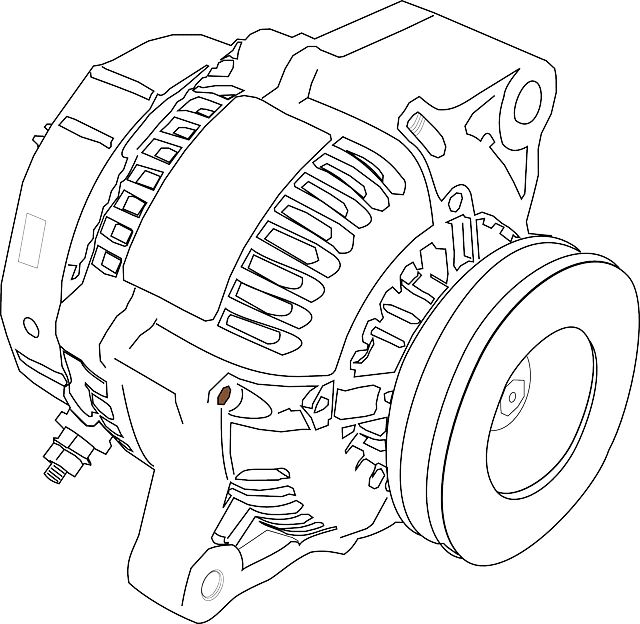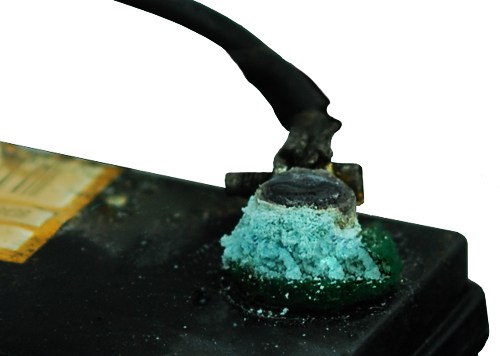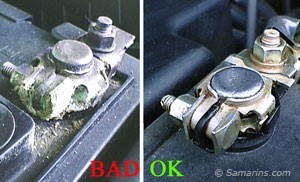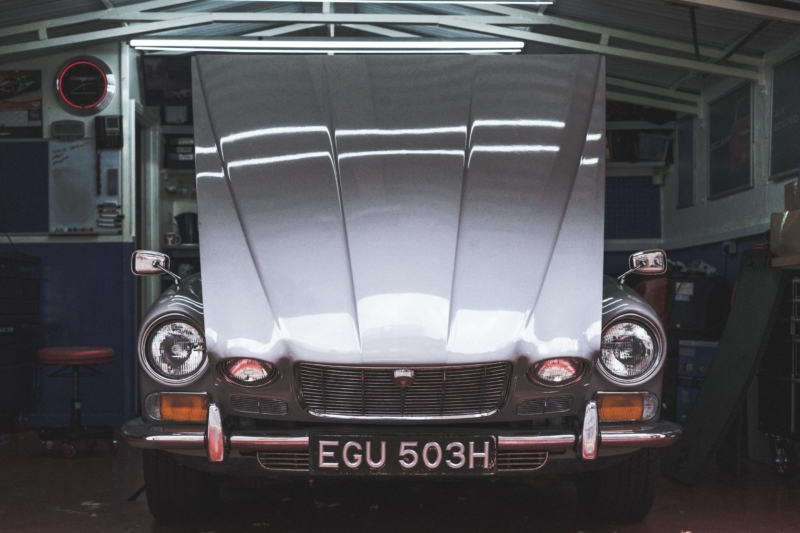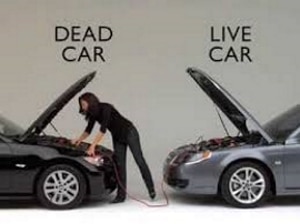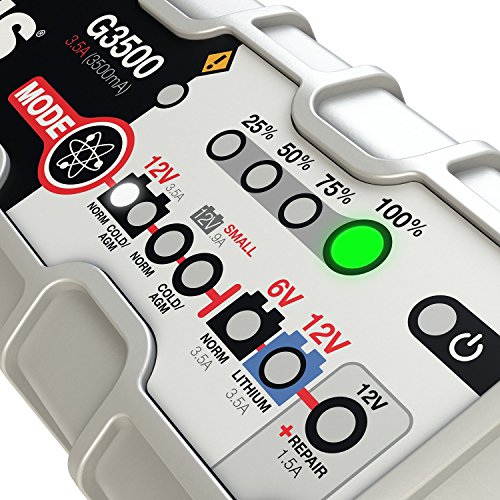
Besides the alternator, the battery is one of the most vital components in any automobile’s electric system. It provides the juice to run all of your expensive electronic devices when the engine isn’t running, and when the engine is running, it plays a vital role in the proper functionality of the alternator’s voltage regulator. Unlike old and outdated electric systems that utilized generators and can function without a battery, contemporary automotive electrical systems need a battery in order to operate effectively.
A dead battery means a vehicle will not start, as well as an alternator that will certainly have to work too tough– possibly to the point of failure– which is why charging an automobile battery is so important in terms of modern auto technology. Although a car’s alternator can keep its battery charged under normal scenarios and circumstances, batteries do go dead for a variety of factors and reasons, and there also comes a time in the life of every automobile battery when it’s simply time to move on and get a new car battery.
What Charges a Car Battery?
There are generally 2 main ways in which a vehicle battery can be charged: by the alternator in the car, by an external charger (usually plugged in a socket), and in a way by a jump starter giving it a temporary boost (although not charging the battery as such). Normal battery use, like running the radio or dome lights while the engine is off, will certainly be replenished naturally the next time you start your car or truck. As the RPM of the engine rise, the alternator’s capacity to produce electricity additionally raise, and also any power that isn’t really being utilized by accessories like your headlights will be available to charge your battery.
In many cases, like when you’re idling at a stop light, there may not be sufficient power to run all of your car electrical accessories (radios, lighters, phone chargers, inverters, AC, etc.), so instead the battery getting power it would need to release the power to keep up with the demand.
When properly charged, and also in good working order, a car battery will typically read 12.4 to 12.6 volts as well as having enough capacity to power a 25A load from 9 to 15 hrs. At this stage the voltage will certainly have gone down below listed 10.5 volts, and the battery most likely will not have the ability to start the vehicle. Extreme temperatures, and also damage sustained via the normal cycle of charging and discharging the battery, could decrease the capacity, which is why you could return to a car with a dead battery after leaving your headlights on while running a brief duty, while in another situation, you could be able to leave them on throughout the day and also still start the engine just fine.
Charging an Automobile Battery
If the alternator isn’t really doing its job for whatever reason (alternator issue, weak battery, electrical issues), there are various other means of charging an automobile battery by utilizing an external battery charger. These battery chargers run off AC power and also provide 12V DC at relatively low voltages, which is the very best way to charge a totally dead battery. Charging a dead battery with an exceedingly high voltage could increase the off-gassing of hydrogen, which can subsequently cause an unsafe scenario where the battery may actually blow up. This is why it is necessary to take the same care when attaching a cars and truck battery charger as you would when hooking up jumper cords, as well as why it’s often a great idea to use a trickle battery charger.
With that in mind, it’s also possible to supply a certain degree of charge to a dead battery using jumper cables, although there are some risks. After hooking up jumper wires from a donor vehicle to the battery as well as engine or framework of a car with a dead battery, starting as well as running the donor’s vehicle for a while will certainly permit its generator to charge the dead battery.
Throughout this procedure, every one of the accessories in the donor car ought to be switched off, or the alternator could not have adequate juice left over to charge the dead battery. Depending upon how dead the dead battery is, a couple of minutes will typically give sufficient amount of charge to keep things rolling.
After receiving a jump start, the alternator in the auto with the dead battery will take control of, and also as lengthy as there aren’t a lot of devices running, just driving the car around will allow the battery to charge back up. However, alternators aren’t really designed to charge entirely dead batteries, so attaching a battery charger is still a good idea even after receiving a jump start.
Maintaining a Vehicle battery
Aside from ensuring the battery preserves a sufficient amount of charge, mainly by not leaving the fronts lights on overnight, a lot of vehicle batteries need normal upkeep through checking the electrolyte level and specific gravity (you will need a hydrometer for this, video here: https://youtu.be/WO1F68EDZYs ). The electrolyte, which is a mixture of hydrochloric acid and water, need to constantly cover the lead plates in each cell, given that exposing the plates to the air could trigger concerns in time. If the specific gravity is low throughout all the cells, it’s suggested that the battery is in need of a charge, or could be on its way out, while a reduced specific gravity can simply suggest that one of the battery cells has internal issues.
Your car battery won’t keep working without some attention and care on your part. There are a few things worth knowing about automotive batteries, which will help you understand exactly what they do.
Because automotive batteries contain hydrogen-oxygen gasses and sulfuric acid that can cause serious burns, you need to observe some precautions before you handle the battery. The American National Standards Institute recommends wearing safety glasses or goggles and a face shield. Other precautions include never leaning over the battery, working in a well-ventilated area and keeping all ignition sources like cigarettes away from the battery.
About cars and truck batteries
The battery stores power in a chemical form that is released on demand as electrical energy. The energy is needed by the car’s ignition system to crank the engine, as well as to power the lights or various other accessories. If your alternator stops working, your car could operate on the battery alone, at least for a brief amount of time. Usually, however, as long as your engine is running, the alternator keeps the battery charged. If you operate any electric accessories with the engine off– such as power windows, the stereo or headlights– the battery will slowly drain.
Due to the fact that vehicle batteries contain hydrogen-oxygen gasses and sulfuric acid that could cause serious burns, you need to observe some safety measures before you manage the battery. The American National Standards Institute advises putting on goggles or safety glasses and also a face shield. Other precautions include never leaning over the battery, operating in a well-ventilated area and also keeping all ignition sources like cigarettes away from the battery.
Water level
First, if your battery is an older, not sealed type, it’s important to make sure the water level is adequate. It’s easy to tell which one you have in your car: unsealed batteries have small vent caps on top of the battery that can be easily unscrewed. If the water level is lower than the bottom of the cap, refill it. For areas where the tap water has a high mineral content – aka hard water, use distilled water which you can buy at every gas station, supermarket and autoparts shops. If you’re unsure whether the water in your area is hard or soft, distilled water is your best and safest bet for replenishing the water in the battery without risking a mineral build-up in the battery cell. Check the water levels often during hot weather and summer months, because heat causes water to evaporate quicker. If the battery water level gets too low, the heat generated within the battery will destroy the battery cells beyond any repair and you will need to get a new battery. Always follow manufacturer’s manual and guidelines when replenishing water in your battery as you are handling a corrosive and hazardous materials. Before unscrewing the tops, either do not remove the battery from its compartment at all (preferably) or, if you absolutely need to remove the battery for this (for any reason, for example short external battery charger cables) make sure that you move the battery first, place it on a solid and safe flat surface. Only then remove the caps carefully. Never put unscrewed tops in your pocket or any corrosive materials as the tops will have residual acid on them and you will surely damage the surface. Best is to run clear water over them to remove acid residues and place them on an old rag or a can while replenishing the battery. After pouring water into a lead acid battery, never forget to dry the surface of the battery. Close the caps of individual cells tightly. Acid spills can be neutralized using simple baking soda and water. Note: ensure that baking soda does not enter battery cells.
If your battery is a newer, sealed type, it’s much easier – you won’t be able to find or unscrew the caps as these batteries are constructed to be maintenance-free in terms of the water and battery inside parts.

Old type car battery with tops
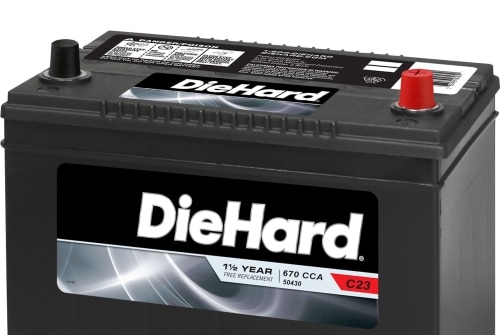
Newer type battery with no tops
Terminals
Next, visually check the car battery terminals (one is marked positive “+” (usually RED) and the other is marked negative “-” (usually BLACK)). Before cleaning the terminal connection points or removing the battery, disconnect the negative terminal first whenever you disconnect the battery cords from the terminals. Removing the positive connector first can cause a spark, especially if you’re using a metal tool like a wrench or screwdriver that comes in contact with any piece of metal on the car. The spark can create an ignition source that could cause the battery to explode, cause a fire and other damage to your car.
If the lead terminals are encrusted with corrosion deposits, they can block the flow of electricity. It’s best to clean them with a wire brush dipped in baking soda and water (100 g per liter or 4 Oz per pint). Now, check the battery cable ends. A loose battery cable causes exactly the same symptoms as a totally dead battery so if the battery cable end that is attached to the terminal moves in any way, it is too loose and needs tightening. Even if you are able to start the car, driving it will cause the cable to move which will cause the recharging will be interrupted intermittently ultimately leading to a dead battery. Apply Petroleum jelly or grease to battery terminals to protect them from corrosion. Use clamps and battery terminals made from good quality copper which are also alloy plated. Layer of alloy prevents terminals from corroding
Brackets
Make sure the brackets that hold your battery in its compartment are tight. Loose brackets will cause the battery to vibrate when the car is running and this constant vibration will shorten the life of the battery. It’s also wise to check the condition of the battery tray for corrosion. The function and condition of the battery tray can be weakened if corrosion is apparent and isn’t stopped. If there is just a minor corrosion, brush it off with a wire brush and apply an acid-resistant paint. If the tray has been already weakened and damaged by corrosion, replace it completely. The condition of the tray and brackets is vital to keeping the battery from tipping over – a rare, but not unheard occurrence that can cause severe damage to the car.
Charging
If your car battery needs to be recharged, the best is to use a trickle charger that ensures the battery gets charged slowly and a relatively low voltages, preferably for 8 to 10 hours or overnight. If your battery is the older, unsealed type, remove the vent caps first and place a damp piece of cloth across the openings. Attach the alligator clips on the charger to your battery. The red clip needs to be attached to the positive terminal and the green or (more usually) black clip has to be attached to the negative terminal. If your battery is the newer, sealed one, there should be a charge instructions and indicator window on top. The battery needs to be recharged if the indicator window is green or dark. Usually, the battery needs to be replaced for a new one if the indicator window is clear or yellow.
Unless the manufacturer says otherwise, the average life of a car battery is about four years but there are lots of factors that influence for how long you’ll be enjoying a reliable starting of your vehicle. You can read more about these in our Did not start? The frost is most likely not what killed your car battery article.

